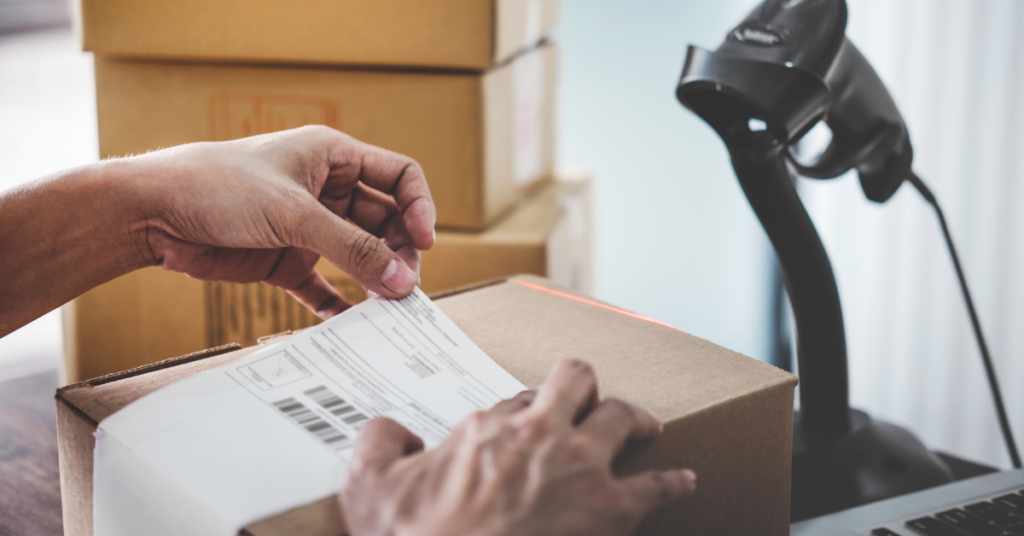There’s a saying in the military that “no good plan survives first contact with the enemy.” The same might be said about product packaging and the brutal world of retail shipping. What may look and feel like a solid shipping box for your goods may conceal a fatal flaw that rears its head only after the first few hundred orders leave your fulfillment warehouse.
So how do you make sure your customers receive their products in one piece? This is the question we have an entire testing department dedicated to answering for each project. However, if you’re not yet ready to put our services to work, there are a few helpful resources you can tap into. Two of them we mentioned in last week’s post are the packaging guidelines for UPS and FedEx. In addition to essential details on avoiding costly freight charges, they contain several great tips and best practices for safer shipping. While they’re both beneficial, they’re hardly a riveting beach read. There’s also a large amount of overlap between the two. If you don’t have the time or patience to read all 12 meaty pages, here are the top eight takeaways you need to know from each to build a successful fulfillment process.
1. Stick to Cardboard Boxes
Especially when it comes to your outside container, there are certain materials that FedEx and UPS have found don’t hold up to the rigors of retail delivery. For example, chipboard, a popular material for many brands of shoeboxes and some RTA furniture at first, may seem plenty durable. However, when impacted the wrong way, it can quickly fracture and break apart, leaving your products exposed or wholly destroyed. If you’re not entirely sure your item’s primary packaging will stand up to bumps and bounces of a delivery truck, play it safe and put it in another box.
2. Double Boxing Is Highly Recommended
One of the most timeless and proven shipping methods is called “box-in-box” packing. This technique resembles Russian nesting dolls, putting your item in the center of multiple packaging layers. Most often, double boxing includes one large outside box, an inner layer of peanuts or bubble wrap, followed by an inner box that contains your item and any necessary filler. For easily broken items, this can be expanded to several more layers of boxes, wrap, and peanuts for added shock and impact absorption. Although material-intensive, especially fragile or expensive products may warrant the added precautions.
3. Get Rid of Empty Space
One of the most dangerous ways to ship any item is surrounded by a whole lot of nothing. If you ship your product in too large of a box, the unsupported cardboard can easily be crushed or gouged. Even if the contents survive the initial damage, the box’s integrity will be compromised, making it even more susceptible to further harm. If odd product dimensions keep you from going down a box size, fill in the negative space with lightweight fillers, such as packing peanuts or bubble wrap.
4. Ship liquids upright
Depending on where your product is heading and how far away it is, constant vibration and changes in atmospheric pressure can cause even a well-sealed container to leak. To avoid this as best as possible, design your fillers to keep the product right side up; then use whatever labeling is necessary on the outside box to make it clear to your carrier which way “up” is. It’s also essential that your inner package can contain leaks in the event one occurs. Not only will this make a mess for your recipient, but FedEx and UPS may also charge you an additional delivery fee for their trouble in dealing with it.
5. Be aware of additional handling
Maybe your product ships in a custom box with a branded print on the outside. Or perhaps you have critical opening instructions listed on an outer flap. Be aware of characteristics that might cause FedEx or UPS to slap additional handling instruction labels on your box and what impact that might have on your design. Handling instructions could include “do not stack” and “flammable” warnings, as well as alerts to delivery teams on how the box should be picked up or moved.
6. Overwraps are strictly prohibited
If your customer paid extra to have an item gift wrapped, it’s going to have to be placed inside a larger, unadorned box to be cleared for shipment. Both for liability and ease of handling reasons, neither FedEx nor UPS allow packages to be wrapped in any paper, string, or other easily damaged decoration.
7. Check out their guides for individual product categories
If you’ve ever shipped an item in person at FedEx or UPS, the person operating the register probably rattled off a list of potentially hazardous objects that might be in your package. This often includes things like automotive parts and lithium batteries. The reason they ask is not because those items can’t be shipped, but rather there are special rules to make sure they’re sent safely. If you think your product might be on that list, check out FedEx’s full “How to Pack” document here and the UPS Special Care Page here.
8. Put duplicate shipping information inside the box
Although not a common occurrence, there are many possible ways for your package to either be separated from its shipping label or have the shipping label be rendered illegible. If this happens mid-shipment, it can lead to a lost item, as your carrier is no longer sure where it came from or where it’s going. To protect against this situation, both FedEx and UPS recommend printing a second copy of your shipping label and placing it inside the box before taping it shut. In an event where a label is completely lost or destroyed, this gives your package a fighting chance to still be delivered and may save you from a costly, negative customer experience.



I’m happy you mentioned how “Box-in-box” packing is one of the most traditional and tested shipping techniques. Double boxing consists of one sizable outside box, an inner layer of packing peanuts or bubble wrap, and then an inside box containing your item and any additional filler that may be required. This can be increased to include numerous additional layers of boxes, wrap, and peanuts for easily damaged products to absorb further stress and impact. My sister, who just launched an internet perfume company, will find this helpful. I think it would be better to choose a trustworthy freight transport firm as she has consumers in many places. I’ll email her a link to your essay so she may read your counsel when the time comes.